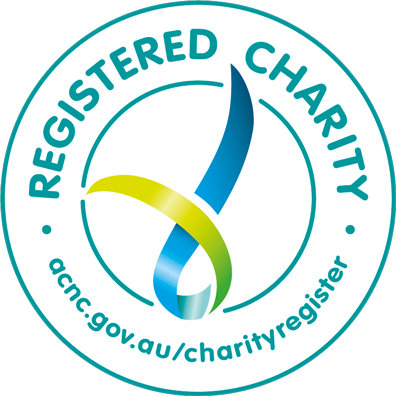Exercise is the best medicine.
The best type of exercise is the exercise you will continue to do regularly. If exercise is medicine, adherence is dosage.
Why is exercise so important?
The goal of exercise is to increase your reserve in areas such as strength, aerobic fitness, mobility, and balance to reduce the impact of Parkinson’s symptoms on your quality of life. A sedentary lifestyle when living with Parkinson’s can worsen both mood and motor symptoms. It also affects your medication uptake and cognitive capacity. Any movement is better than no movement and by breaking the cycle of inactivity you can improve your mental and physical wellbeing. Walking the dog, doing the grocery shopping and completing household chores are all beneficial ways to engage in “incidental” activity each day.
Exercise helps with improve movement, strength and balance, and also enhances mood, manages stress and has no side effects! Research suggests exercise plays an important role in slowing down the progression of Parkinson’s symptoms.
Any form of exercise is recommended, including cycling, yoga, boxing, walking and Tai Chi. An exercise physiologist, recommended as part of your care team, can create an exercise program for you tailored to your unique set of symptoms. Since Parkinson’s is often one-sided, you may require special adjustments when exercising or using equipment (e.g. get your bike fitted to you).
You are not expected to know how to exercise with Parkinson’s on your own. Because it can affect your body symmetry or one-sidedness, so it is always best to engage the support of exercise professionals to keep you motivated, maintain variety, and ensure you are doing the exercises that best address your symptoms.
Current recommendations for exercise
People living with Parkinson’s gain the most benefit when they meet the following guidelines for four types of exercise each week (1):
- Aerobic exercise at 30 minutes at least three times per week, e.g., swimming, fast walking, running, dancing, hiking, cycling and getting your heart rate up. You don’t have to do the 30 minutes in one block. Try taking 3x ten-minute walks. Getting in 7,000 steps a day is also a good goal.
- Strength or resistance training involves overloading your muscles which encourages them to become stronger. Complete at least twice per week and gradually but continuously increase your load, e.g., gym classes, boxing, Pilates or weights (free, machine or body weight exercises).
- Flexibility or stretching should be undertaken 2-3 times per week and is aimed to improve your mobility or movement, e.g., stretching at home, using online videos, yoga, or tai chi.
- Balance, agility and neuromotor exercises should be completed 2-3 times per week and involves motor and cognitive tasks which are often challenging in Parkinson’s. This is where an exercise professional can provide ideas, variety, and stimulation to your weekly routine. This may include a dance class, agility training, balance challenges, multi-tasking, and amplitude training where you focus on the size of a movement.
The great thing is you can combine types of exercises in one session, e.g., boxing is classed as aerobic because it increases your heart rate, is strength-based due to powerful punching and neuromotor because it requires cognitive effort to remember the sequence, timing, accuracy, and technique.
Remember that any movement is better than no movement. Start small and work your way up. It is always best to seek professional advice on which exercises are most suitable for you.
Benefits of exercise
Overall people experience a better quality of life from exercise, including:
- increased mental health and wellbeing
- improved strength, endurance, gait and balance
- improved sleep and less fatigue
- improved medication uptake
- improved walking speed and step length
- improved cardiovascular fitness
- improved metabolism
- reduction in cognitive decline and Parkinson’s-related dementia
- reduction in risk for other chronic diseases and conditions
- bone strength maintenance that reduces impacts of Parkinson’s-related falls
- increased life expectancy.
How do I access an EP?
Accessing accredited exercise physiology services can make a significant difference in managing the symptoms of Parkinson’s, improving quality of life and maintaining independence.
It’s advisable to explore all available pathways to find the support that best suits your individual needs. Look to:
- the peak body, Exercise & Sport Science Association (ESSA) find an EP with Parkinson‘s experience.
- There are two types of plans that can be prepared by a General Practitioner (GP) for Chronic Disease Management (CDM): GP Management Plan (GPMP); and Team Care Arrangements (TCAs). If you have a chronic (or terminal) medical condition, your GP may suggest a GPMP. Allied health comes under TCAs.
- your state-based Parkinson’s organisation for advice on EPs to access.
- private health to see what is covered in relation to EP consultations and expenses.
- NDIS or My Aged Care plan supports.
References:
(1) Oliveira de Carvalho, A., Filho, A. S. S., Murillo-Rodriguez, E., Rocha, N. B., Carta, M. G., & Machado, S. (2018). Physical Exercise For Parkinson’s Disease: Clinical And Experimental Evidence. Clinical practice and epidemiology in mental health : CP & EMH, 14, 89–98. https://doi.org/10.2174/1745017901814010089
(2) Langeskov-Christensen M, Franzén E, Grøndahl Hvid L, et al. (2024). Exercise as medicine in Parkinson’s disease. Journal of Neurology, Neurosurgery & Psychiatry; 95:1077-1088.
(3) Giardini, M., Nardone, A., Godi, M., Guglielmetti, S., Arcolin, I., Pisano, F., & Schieppati, M. (2018). Instrumental or Physical‐Exercise Rehabilitation of Balance Improves Both Balance and Gait in Parkinson’s Disease. Neural plasticity, 2018(1), 5614242.
(4) Shen, X., Wong-Yu, I. S., & Mak, M. K. (2016). Effects of exercise on falls, balance, and gait ability in Parkinson’s disease: a meta-analysis. Neurorehabilitation and neural repair, 30(6), 512-527.
(5) Xu, X., Fu, Z., & Le, W. (2019). Exercise and Parkinson’s disease. International review of neurobiology, 147, 45-74.
Other resources:
Dance for Parkinson’s Australia www.danceforparkinsonsaustralia.org
Exercise is Medicine Australia www.exerciseismedicine.org.au
Exercise Right www.exerciseright.com.au
Find an Accredited Exercise Physiologist www.essa.org.au
U-Turn for Parkinson’s https://uturnparkinsons.org/






